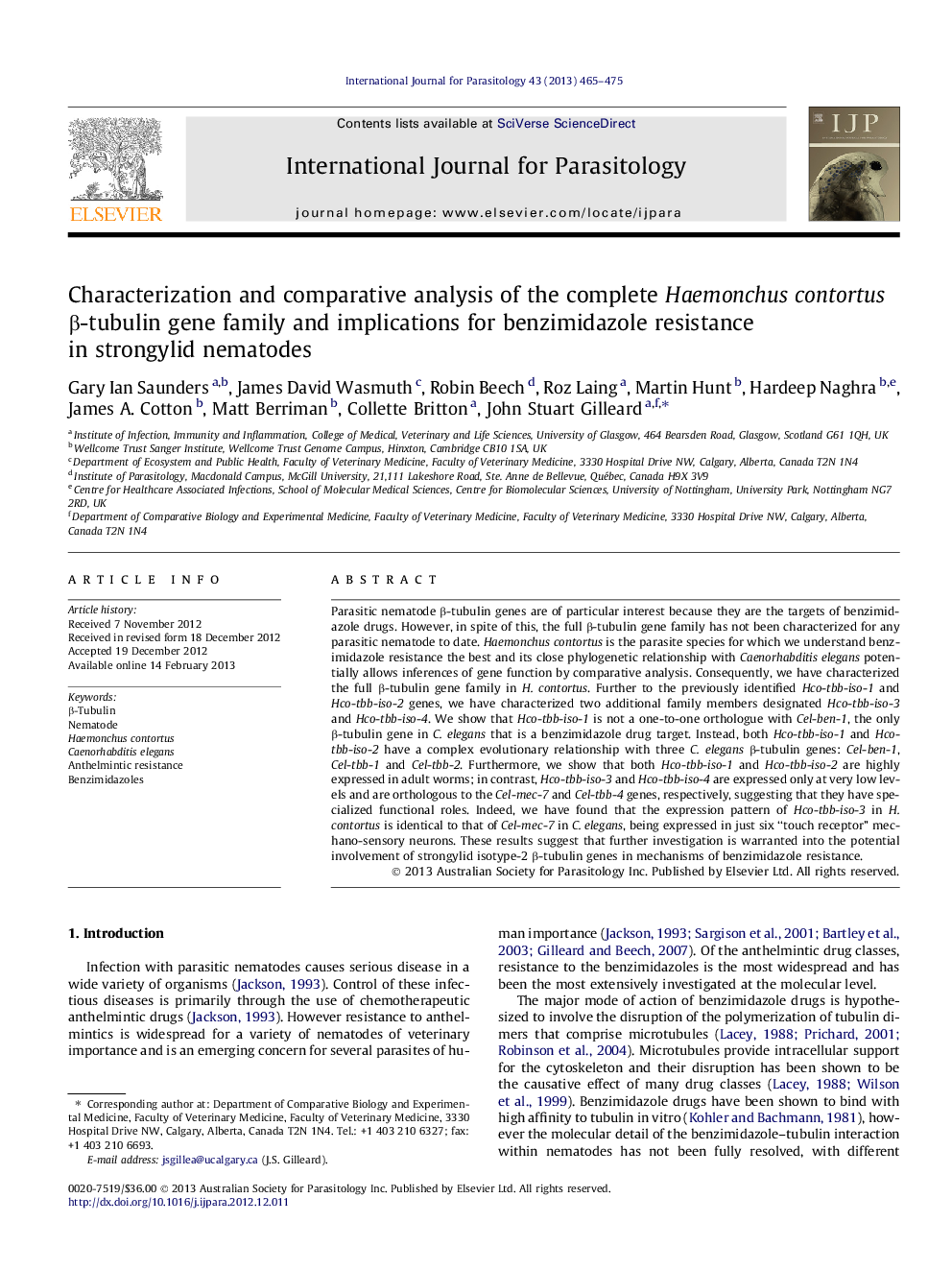| کد مقاله | کد نشریه | سال انتشار | مقاله انگلیسی | نسخه تمام متن |
|---|---|---|---|---|
| 2436160 | 1107280 | 2013 | 11 صفحه PDF | دانلود رایگان |

Parasitic nematode β-tubulin genes are of particular interest because they are the targets of benzimidazole drugs. However, in spite of this, the full β-tubulin gene family has not been characterized for any parasitic nematode to date. Haemonchus contortus is the parasite species for which we understand benzimidazole resistance the best and its close phylogenetic relationship with Caenorhabditis elegans potentially allows inferences of gene function by comparative analysis. Consequently, we have characterized the full β-tubulin gene family in H. contortus. Further to the previously identified Hco-tbb-iso-1 and Hco-tbb-iso-2 genes, we have characterized two additional family members designated Hco-tbb-iso-3 and Hco-tbb-iso-4. We show that Hco-tbb-iso-1 is not a one-to-one orthologue with Cel-ben-1, the only β-tubulin gene in C. elegans that is a benzimidazole drug target. Instead, both Hco-tbb-iso-1 and Hco-tbb-iso-2 have a complex evolutionary relationship with three C. elegans β-tubulin genes: Cel-ben-1, Cel-tbb-1 and Cel-tbb-2. Furthermore, we show that both Hco-tbb-iso-1 and Hco-tbb-iso-2 are highly expressed in adult worms; in contrast, Hco-tbb-iso-3 and Hco-tbb-iso-4 are expressed only at very low levels and are orthologous to the Cel-mec-7 and Cel-tbb-4 genes, respectively, suggesting that they have specialized functional roles. Indeed, we have found that the expression pattern of Hco-tbb-iso-3 in H. contortus is identical to that of Cel-mec-7 in C. elegans, being expressed in just six “touch receptor” mechano-sensory neurons. These results suggest that further investigation is warranted into the potential involvement of strongylid isotype-2 β-tubulin genes in mechanisms of benzimidazole resistance.
Figure optionsDownload high-quality image (89 K)Download as PowerPoint slideHighlights
► The Haemonchus contortus (Hco) β-tubulin gene family consists of four members.
► Hco-tbb-iso-1 and Hco-tbb-iso-2 are related to Cel-ben-1, Cel-tbb-1 and Cel-tbb-2 of Caenorhabditis elegans.
► Hco-tbb-iso-3 and Hco-tbb-iso-4 are orthologous to Cel-mec-7 and Cel-tbb-4.
► Hco-tbb-iso-3 and Cel-mec-7 evidence conservation of function.
► Involvement of Hco-tbb-iso-2 in benzimidazole resistance warrants further investigation.
Journal: International Journal for Parasitology - Volume 43, Issue 6, May 2013, Pages 465–475